by Carolyn Edlund
Here’s how one artist expanded his business by offering merchandise using his designs.
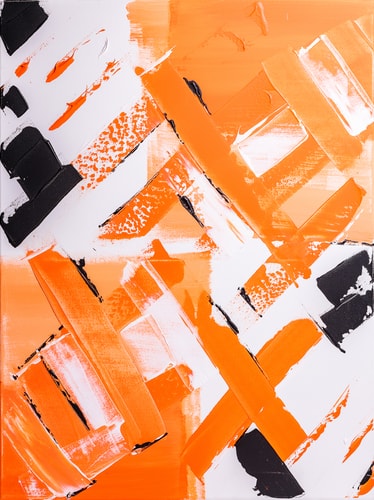
“Marked” acrylic, 60×80 cm, original abstract painting by Patrick Jansen
Dutch artist Patrick Jansen produced a collection of abstract paintings with the intention of selling his original art. But then he realized he could leverage his work and create ongoing income by having his designs printed on all types of products. There are different ways to do this , including the use of Print on Demand (POD) services.
POD providers run marketplace websites where artists can build their own shops, upload images, and designate products they wish to sell. They have shopping carts, fulfillment and customer service included in the deal, and take a percentage of every order they ship. This allows artists to increase sales by expanding their offering to include a spread of products and price points. But POD is not for everyone; it’s just one option for artists looking to monetize their business. Many artists choose to sell only original work, or their art might not be appropriate for use on products.
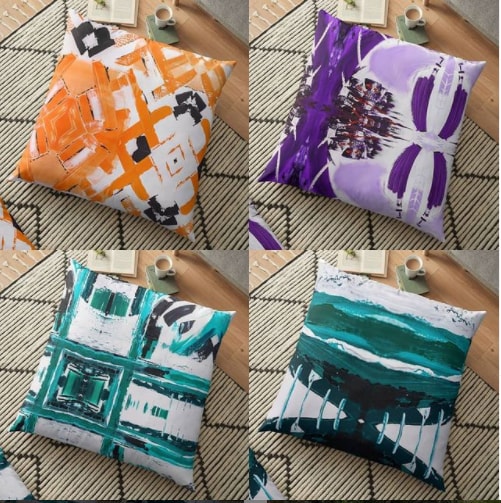
Patrick Jansen sells pillows featuring his abstract art.
Jansen realized that his bold, colorful abstracts were a good fit for the POD market. He researched different providers, and selected RedBubble because of overall good reviews, the breadth of product choices and ease of use. He found that he could freely change the profit margin to earn more on sales, and tweak that margin over time to find what worked best.
Artists can face some challenges when selling on a POD site. “There is a lot of competition, so you have to do marketing to attract people to your shop,” Jansen says. “There is a very small chance that your products will be on their front page, so it’s up to you. They also require high resolution photographs. You should have professional quality photographs, with good lighting.”
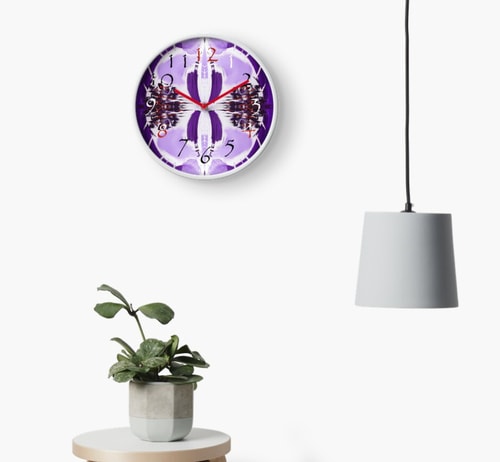
Print on Demand products range from wearables to household goods, like this wall clock with Patrick Jansen’s design.
Building an artist shop on RedBubble was relatively easy. “You can upload images and get your products up and running quickly. I think in the end it can pay off; this is one way to get traction,” he explains. “Offering merch is extra income, and lets you reach a massive audience. There is no limit to your sales there.”
Jansen looked at his existing body of work for the purpose of choosing art for merchandise, then tested each piece of art on different products to see the result and make decisions on the best fit. He ended up with a grouping of about one third of his paintings that worked as a unified collection.
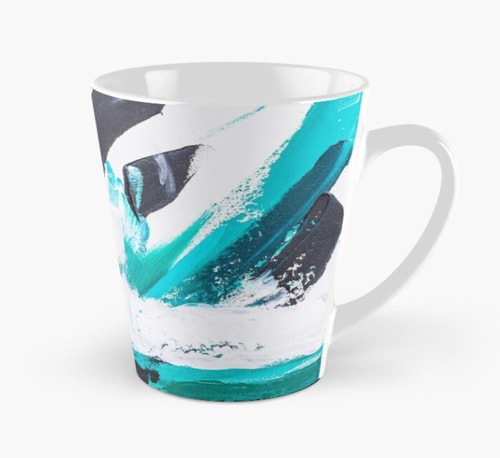
Jansen’s abstract art translates well into product design.
Than he began building out product offerings, finding “there were a few products I didn’t want to use, they didn’t look quite right. I started with just a couple items, but then found more and kept adding them to my line of products.”
He currently has more than 20 different options in his shop. “Phone cases, masks, backpacks, pillows and socks work very well with my designs,” he says. “My art really pops, so it looks great on accent pieces.”
He learned a lot from the process of working with POD templates, and recommends that artists be open to adapting their work. “Use Photoshop first to play with your designs before placing on products,” he says. “You may have to crop your art or make it in certain shapes to go with their templates. If you know what you want beforehand, you could literally plan to create designs for merchandise.” He suggests that artists also place orders for POD items so they can see the quality of the products they will be selling.
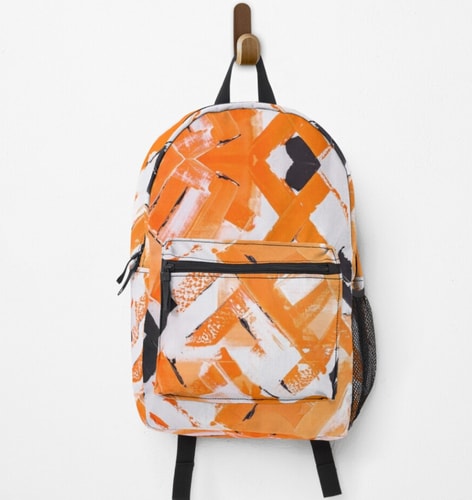
Patrick Jansen’s abstract artwork, translated into a backpack design.
In terms of marketing, Jansen is currently focused on social media. “I’m posting Instagram stories and in my feed,” he said. “I use Instagram in English. I’ve been changing my Instagram profile link to match the products I’m promoting. I believe I have a larger Dutch audience for my Facebook page, so I use my native language there.”
Jansen uses product shots and collages often in social media posts, experimenting with this approach to show off the designs. “I want to inspire people with the bold colors and unique work I’m making,” he says. “I feel that this helps people express their own personalities. So far I’ve made a few sales and all of my customers have contacted me with positive feedback.”
In the future, he plans to set up a proprietary art website to sell original paintings, then link to his RedBubble store for additional shopping. He says, “As I add more art to my portfolio, I’ll be able to eventually bring in new series of designs and grow my entire collection.”

Speak Your Mind